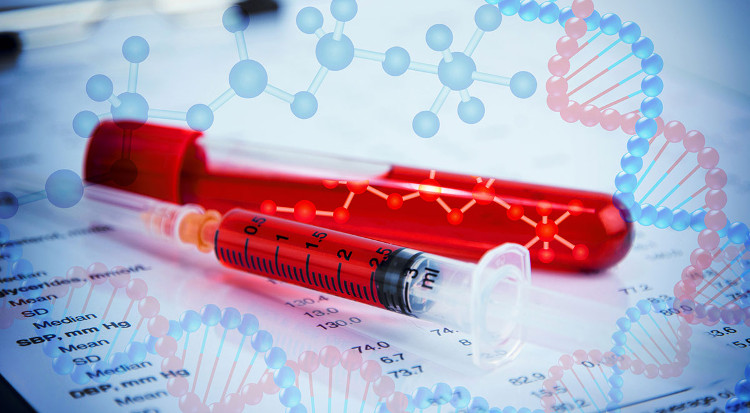Why is our blood red, but not green?
Human blood is always red, whether it flows in a vein or from a wound. But why, when we look through the skin, do we see that the veins are green?
Human blood is red because of red blood cells, containing hemoglobin. This is a protein that contains a red compound called heme , which is very important in transporting oxygen in the bloodstream. Heme contains an iron atom linked to oxygen, and it is this molecule that transports oxygen from your lungs to other parts of the body.
Our eyes see the special colors of the chemicals based on the wavelengths of light they reflect. Because the hemoglobin binds to oxygen absorbs blue light, they reflect orange-red light into our eyes, making it appear red. That's why blood turns bright red when oxygen binds to iron, if there is no oxygen present, the blood will be darker red.
Carbon monoxide - a potentially lethal gas - can also bind to heme, with a 200 times stronger oxygen bond. When carbon monoxide is present, oxygen cannot bind to hemoglobin, leading to death. Because carbon monoxide is clinging to heme, blood is still in a bright red state, sometimes it appears pink on the cheeks of victims of carbon monoxide poisoning.

Human blood is always red because of hemoglobin.(Photo: Hello Bacsi).
Sometimes when looking through the skin we see the blood is green. You may have heard that the blood in our veins is green because when it returns to the lungs, it lacks oxygen. But this is not accurate, human blood is never green . The blue in the vein is just an optical illusion. Green light does not penetrate deeply into tissues like red light. If the blood vessels are deep enough, your eyes will see blue light reflected more than red light, which is because the blood absorbs part of the red wavelength.
But exist in the animal world . It is common in squid and horseshoe crabs. Their blood contains a chemical called hemocyanin , which contains copper atoms to transport oxygen. Even some other animals have green or purple blood. The reason for this difference is that these blood types carry an oxygen transport molecule different from our hemoglobin.

The green blood of horseshoe crab is an important ingredient in the pharmaceutical industry.(Photo of AP / Steve Helber).
In addition to these exceptions, most of the animals' blood is red. But this red color is not the same as the blood flowing in the veins of people. In different species, variations of hemoglobin are also different. This allows scientists to distinguish blood samples from different animals.
If you observe, you can see, when bleeding, the blood will begin to turn dark red over time, and when the blood is dry it will become darker, and then its pigmentation will decompose into a compound. substance called methemoglobin . Over time, dry blood continues to change, becoming more and more black due to another compound called hemichrome . This constant color and chemical change allows forensic scientists to determine the time when blood appears at crime scenes.
- Lizard species are green and extremely poisonous
- Green bananas and 13 good health effects you don't know
- Blood brings life
- Decode the phenomenon of green bleeding
- Green light helps thicken artificial blood vessels
- Vietnamese science separates precious substances from lotus leaves and green beans to help reduce blood cholesterol
- Slimming and lowering blood fat with Oriental medicine
- Why do we get green tea?
- Determining bloodline according to blood type
- 'Little green heart blood'
- Why is octopus blood green?
- Green tea can fight blood cancer
 'Fine laughs' - Scary and painful torture in ancient times
'Fine laughs' - Scary and painful torture in ancient times The sequence of numbers 142857 of the Egyptian pyramids is known as the strangest number in the world - Why?
The sequence of numbers 142857 of the Egyptian pyramids is known as the strangest number in the world - Why? History of the iron
History of the iron What is alum?
What is alum?